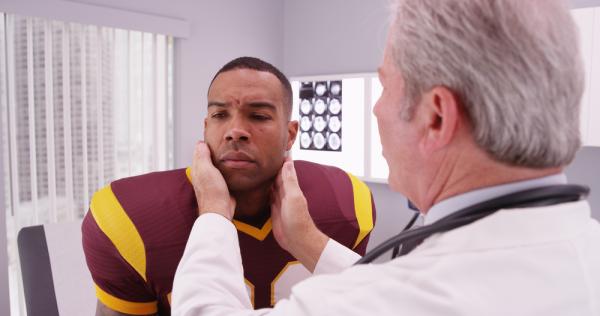From the realm of concussion research, it appears that the data are beginning to catch up with the intuition of the medical community. And that's good news for head trauma victims, and their coaches, who are looking for greater clarity on how to best protect players.
A new study confirms something that we believed was true, yet couldn't be sure of. But research published online in the recent issue of Pediatrics concludes that when concussion victims are removed more quickly from physical activity after an incident and have additional time to recover before resuming play, this intervention significantly speeds recovery time and reduces concussive symptoms.
In fact, continuing to play doubles recovery time and worsens short-term mental function, says the authors of the study, "Removal From Play After Concussion and Recovery Time." Lead researcher R.J. Elbin and his team studied 69 players aged 12-to-19 who played a variety of sports including ice hockey, football, basketball, volleyball, and soccer. Of the cohort, 35 were removed from play after a concussion, which occurred either during a game or practice. The balance -- 34 -- continued to play.
The half that continued to play, "took 44 days on average to recover from symptoms, versus 22 days for those who were immediately sidelined," the AP reported. "Sidelined players reported symptoms immediately, including dizziness, headaches, mental fogginess and fatigue, and were diagnosed with concussions by trainers or team physicians. The others, who continued playing for 19 minutes on average, delayed reporting symptoms and were diagnosed later. Those who continued to play had worse scores on mental function tests performed eight days and 30 days after the concussion. Medical records showed mental capacity had been similar in all players before their concussions."
It's important to note that the research sample is small and that the study was conducted at just one facility, the concussion clinic at the University of Pittsburgh Medical Center. However, the results appear to support the general belief among physicians in this field that brain rest is central to symptom mitigation, and then recovery.
This should be welcome news to both players and results-oriented coaches, caught between the competing notions of keeping an effective player on the field, or jeopardizing victory by sitting the injured player down. But now, these results indicate that immediately sidelining concussed players benefits all involved, because doing so doubles the speed of recovery, and in the long run allows the player to return to action more quickly.
The Centers for Disease Control estimates that of the 3.8 million reported concussions each year, more than a third -- 1.6 million -- are sports related. What this also means is that the benefits of this small study can potentially be applied to non-sports-related incidents, whereby anyone who suffers brain trauma -- or even witnesses an incident -- can realize that the best course of immediate action for the injured party is rest.
“'Being or not being removed from play carried a lot more variance than any of those other variables,' said Michael Collins, director of the UPMC Sports Medicine Concussion Program and a member of the research team, speaking to the Pittsburgh Post-Gazette. 'The take-home message point here is that athletes that have symptoms of injury will benefit themselves by reporting those symptoms, and the clinician will benefit the kid by making sure they’re taken out immediately.'"




